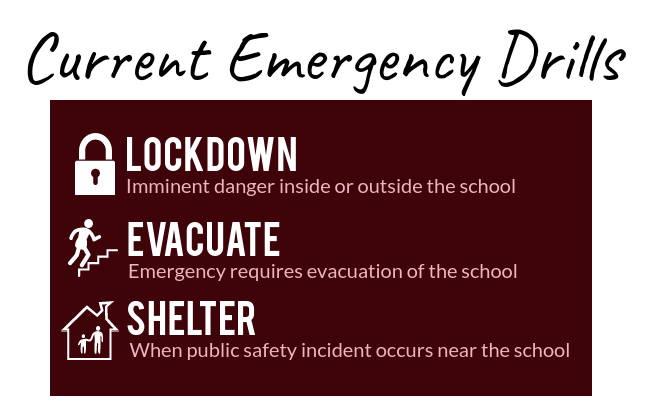Why the unnecessary fear? Teach students how to defend themselves in schools
April 26, 2018
“Pretend like you’re not there.”
“Be out of sight from all doors and windows.”
“Hide.”
Across MCPS, teachers give students these directions in case of an emergency.
While Whitman hasn’t experienced any life-threatening event this year, incidents across the county have prompted a significant increase in drills and awareness. A Clarksburg student was charged Feb. 15 with bringing a loaded gun to school multiple times, according to WTOP.
Other students our age, though, have experienced even more terrifying tragedies in school. 17 students and teachers at Marjory Stoneman Douglas High School in Parkland, Fl. were killed by a shooter Feb. 14. Fourteen of those victims were students.
When I heard about the shooting in Parkland, my heart sank; four of the people I met during my service trip over the summer live in that area. Two of them go to Stoneman Douglas, and that was more than enough to have my heart racing and my mind in a fog. If I found out they were okay, I figured my body would finally start to calm down.
But it didn’t. Even though they were safe, I couldn’t shake the reality that these tragedies occur all the time and that students are always at risk. I finally realized that until laws are passed, students and staff members have to prepare for the worst.
Throughout my 12 years in MCPS, I’ve become extremely familiar with the emergency preparedness policy, LES: Lockdown, Evacuate, Shelter. According to this policy, if there is an “imminent danger inside or outside the school,” then a lockdown alert will go into effect. But the policy still isn’t comprehensive enough.
The MCPS Department of Safety and Security should update the countywide Emergency Response Plan to inform students and staff of what to do if they aren’t able to safely hide or evacuate the building.
During a lockdown alert, students and staff silence their phones, turn off the lights in the classroom and shade the windows, MCPS Public Information Supervisor Gboyinde Onijala said. MCPS also encourages the familiar phrase “if you see something, say something,” Onijala added.
However, nowhere in the Emergency Preparedness Brochure does it state how students, staff or visitors should act when there is no “securable location” and they are face-to-face with a threat.
The reality of our society is that students and staff could face these horrible situations. A lack of preparedness increases the potential fatality of a threat.
While Stoneman Douglas was required—by county policy—to teach active shooter training, only some students said they practiced the drills, according to a CBS News article. The shooter was also a former student and was well aware of these procedures beforehand.
In the event of an active shooter, the LES system is simply not enough. In an emergency, students and staff need to know how to protect themselves from an intruder. To aid this, schools can implement active shooter training. This includes preparing exit routes, learning the best reactions to certain situations and how to help any injured individuals around you, according to the New York Times.
If individuals are well informed of these scenarios beforehand, they will be much better prepared than without previous training.
As of March 20, there had already been 17 school shootings in 2018, according to CNN. This is now the society we live in. The county can’t keep the truth from students any longer: tell us what we can do to protect our lives.










